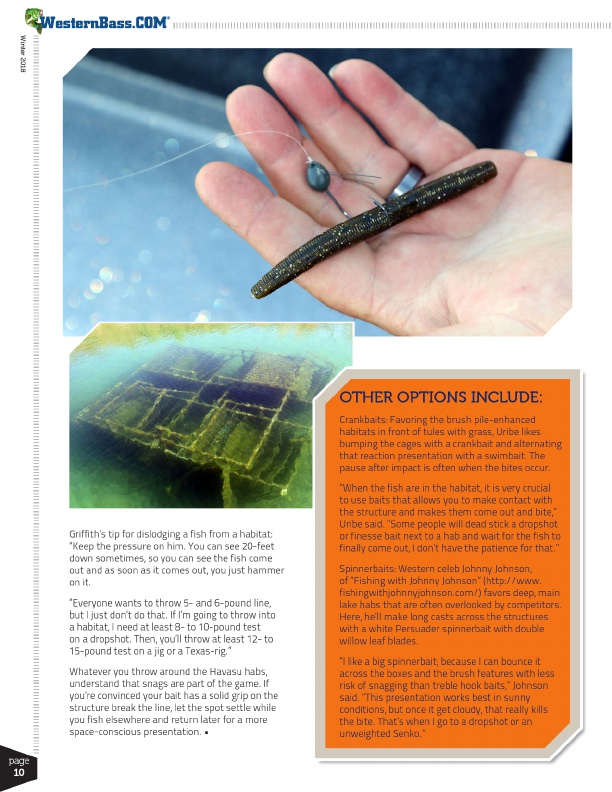
®
Winter 2018
page
10
Griffith’s tip for dislodging a fish from a habitat: “Keep the pressure on him. You can see 20-feet down sometimes, so you can see the fish come out and as soon as it comes out, you just hammer on it.
“Everyone wants to throw 5- and 6-pound line, but I just don’t do that. If I’m going to throw into a habitat, I need at least 8- to 10-pound test on a dropshot. Then, you’ll throw at least 12- to 15-pound test on a jig or a Texas-rig.”
Whatever you throw around the Havasu habs, understand that snags are part of the game. If you’re convinced your bait has a solid grip on the structure break the line, let the spot settle while you fish elsewhere and return later for a more space-conscious presentation. •
OTHER OPTIONS INCLUDE:
Crankbaits: Favoring the brush pile-enhanced habitats in front of tules with grass, Uribe likes bumping the cages with a crankbait and alternating that reaction presentation with a swimbait. The pause after impact is often when the bites occur.
“When the fish are in the habitat, it is very crucial to use baits that allows you to make contact with the structure and makes them come out and bite,” Uribe said. “Some people will dead stick a dropshot or finesse bait next to a hab and wait for the fish to finally come out, I don’t have the patience for that.”
Spinnerbaits: Western celeb Johnny Johnson, of “Fishing with Johnny Johnson” (http://www. fishingwithjohnnyjohnson.com/) favors deep, main lake habs that are often overlooked by competitors. Here, he’ll make long casts across the structures with a white Persuader spinnerbait with double willow leaf blades.
“I like a big spinnerbait; because I can bounce it across the boxes and the brush features with less risk of snagging than treble hook baits,” Johnson said. “This presentation works best in sunny conditions, but once it get cloudy, that really kills the bite. That’s when I go to a dropshot or an unweighted Senko.”